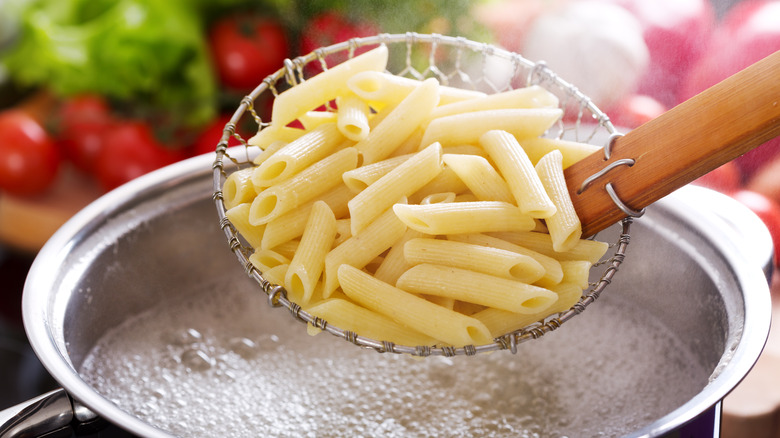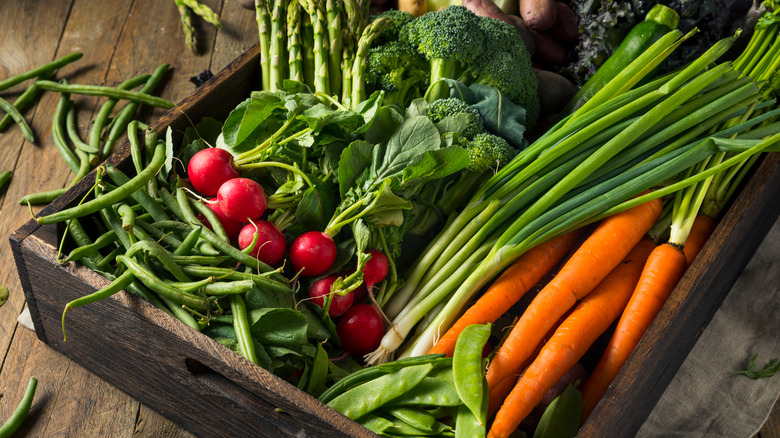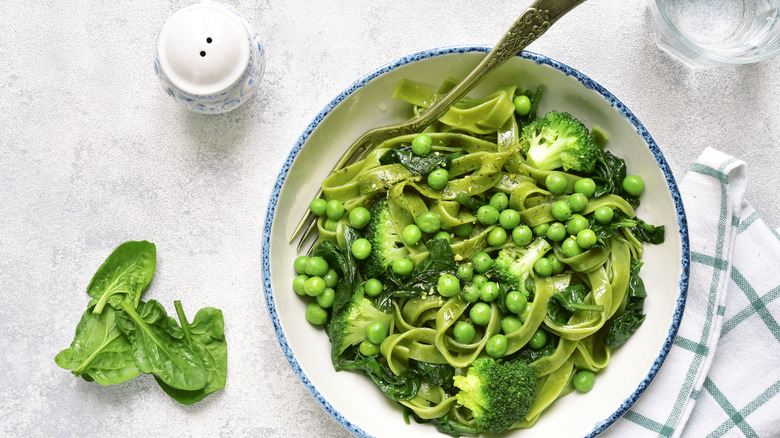The Pasta Water Hack For Uber Flavorful Veggies
Pasta water has near-holy properties, the least of which is its most obvious function. After generously salted water has performed its nominal duty of cooking pasta, it transforms into a starchy, well-seasoned liquid with a host of culinary benefits. To dispose of it would be a minor tragedy. Luckily, pasta water is having a moment among gastronomes and gardeners alike.
One of the best (and most underrated) ways to let this starchy liquid shine is to use it to cook vegetables. The seasoned water imbues plenty of flavor and helps veg get nice and crisp. This method works particularly well with in-season produce that you want to prepare as minimally as possible. What's more, reusing the water will help you achieve the coveted weeknight one-pot dinner.
Here are the best veggies to toss in the pot, plus some other ways to make use of glorious pasta water — and a few tips to bolster its workhorse capabilities.
Best of the blanch
Blanching (a chef-y term for briefly cooking something in rapidly boiling water, usually followed by a quick dip in an ice bath) is a surefire way to guarantee vibrant vegetables. But before you throw the contents of your crisper into your pasta water, keep in mind that some vegetables take to blanching better than others.
As a general rule, go for hearty, crunchy vegetables and bitter greens. Think spring asparagus and pea shoots, summer corn and green beans, fall turnips and cauliflower, and early-winter broccoli rabe. If your produce is in season, cooking it in pasta water will do the most by doing the least, which is to say it will cook your veg without taking away its freshness. For added flavor, try dropping a clove or two of smashed garlic in your pasta water.
For the best results, cook your pasta and veg in a large pot. As we know from the "big-pot blanching" method popularized by Thomas Keller, the best-tasting blanched vegetables are the ones that have ample room to cook.
Level up both your veggies and your pasta
We're not exaggerating when we tell you that vegetables cooked in seasoned pasta water are delicious on their own. However, if you don't mind dirtying another dish, we'd be remiss to come between you and a saute pan. This brings us to yet another benefit of blanching: When you retrieve your vegetables from their ice bath, they'll only need a minute or two in the pan to soak up whatever additional flavors you have swirling around. After all, they're already cooked.
To keep things simple, try sauteeing any freshly blanched vegetable in olive oil or butter with garlic, salt and pepper, and lemon zest. When you're ready to serve, add your vegetables and pasta back to one pot and squeeze lemon juice over the whole thing — plus another dab of butter for good measure. Oh, and keep that pasta water on hand, as there's a third use for it. Adding a splash or two to the pot should help all those delicious flavors stick to your pasta strands.


